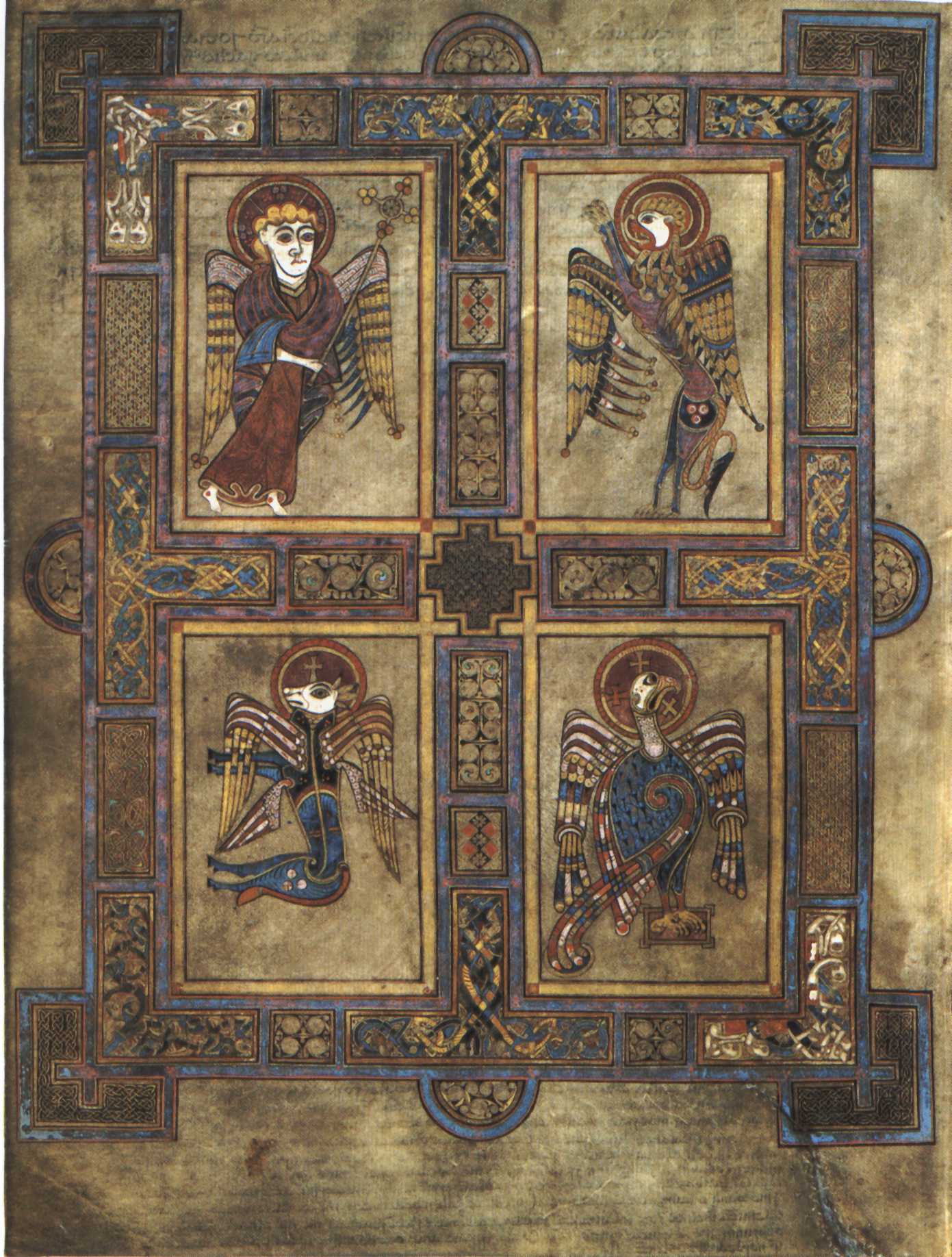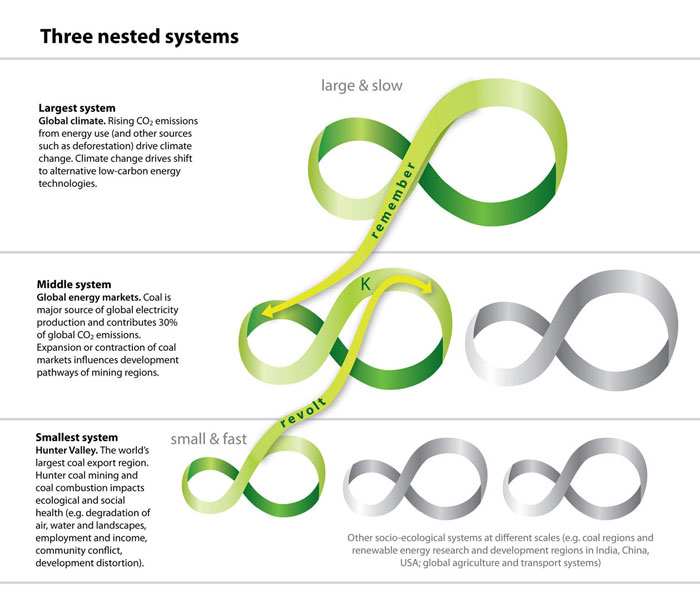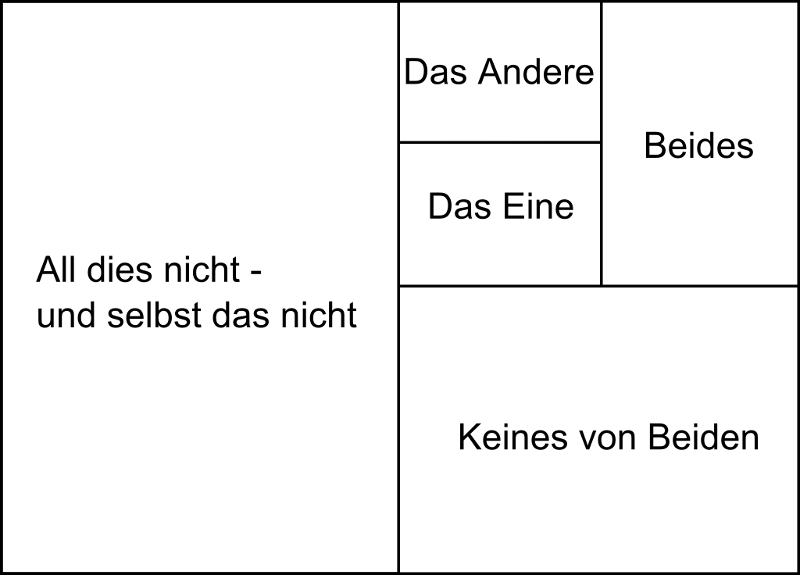INLEIDING
Op heb ik een verhaal verteld over Path of Change in het Dialoques House van ABN AMRO in Amsterdam ZO.
Hierbij de plaatjes van de presentatie. Als er vragen zijn stel ze gerust via email ( hans.konstapel@gmail.com ).
Paths of Change gaat over veranderen en is ontwikkeld door Will McWhinney.
Recent is er een boek “Faciliteren als tweede beroep” verschenen van Jan Lelie dat een eigen interpretatie van Paths of Change bevat. Mensen die meer over Paths of Change willen weten wordt aangeraden in ieder geval dit boek te lezen.
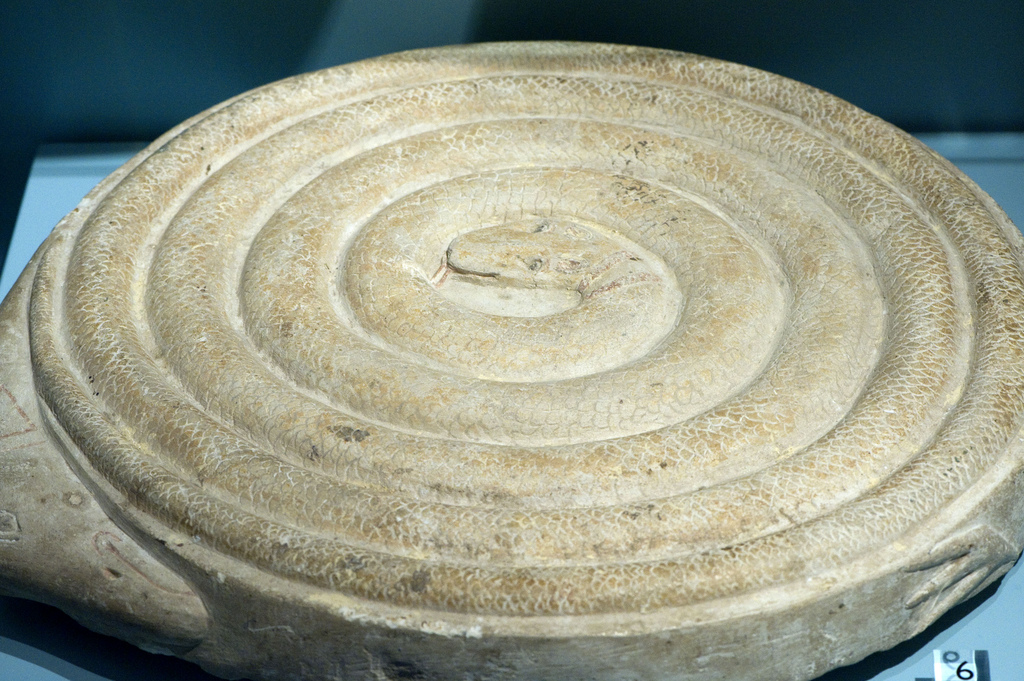
Het Egyptische Spel Mehen
Jan Lelie heeft Paths of Change (POC) toegepast op Faciliteren terwijl ik het vooral heb gebruikt bij het Ontwerpen van Systemen.
POC kan op alle terreinen worden toegepast die je maar kunt bedenken omdat het een Meta-Praxis is, een Theorie over de Praktijk van het Veranderen.
POC is in 1997 door Jan Lelie geintroduceerd door het delen van het boek Paths of Change. Ik was zo onder de indruk van dit boek dat ik onmiddellijk op bezoek ben gegaan bij Will McWhinney. Tot zijn dood zijn we (met vele anderen) bezig geweest om een verbetering van het boek te schrijven met als werktitel Grammars of Engagement (GoE). Het boek is helaas nooit gepubliceerd. GoE gaat over synchronisatie.
THEORIE
POC gaat er vanuit dat mensen een eigen onafhankelijke perspectief op de wereld hebben en dat het mogelijk is om die verschillende kijken te classificeren met behulp van vier zogenaamde wereldbeelden (“Worldview”). Veranderingen gaan altijd samen met veranderingen van wereldbeeld.

De oneindige varieteit aan menselijke kijken kan worden afgeleid door het toepassen van de wereldbeelden op zichzelf. Ieder mens leeft in zijn eigen universum maar er bestaat een fractaal patroon waardoor ze elkaar kunnen begrijpen.
Het patroon kan worden gevonden door de regelmaat in de regelmaat (in de regelmaat…) te onderzoeken. Wat dan blijkt is dat die regelmaat een zelf-referentie is. Hetzelfde patroon blijft zich herhalen.
Veranderingen zijn Cyclisch en Fractaal. Dezelfde veranderingen komen altijd weer terug op iedere Schaal die er bestaat. Ze springen in de tijd van Schaal (bijv. Mens) naar Schaal (Organisatie) en zelfs de Schaalsprongen zijn weer onderdeel van een Cyclus.
Het is zoals de Sufi’s zeggen: Alles draait om Alles.

Alles draait om Alles
VERKLARING MIDDELS DE LOGICA
Hierdoor is Alles uiteindelijk in zichzelf gesloten en roteert rondom het centrum van het centrum (van het centrum…..), de Leegte.
De “mystieke” leegte heeft exact dezelfde eigenschappen als de wiskundige leegte die de lege verzameling wordt genoemd. Dat is niet zo raar als het klinkt als je beseft dat wat de Christenen in het Evangelie van Johannes de Logos noemen (“In den beginne was het Woord (Logos)”) dezelfde principes vertegenwoordigd als wat wij nu de Logica noemen.
De lege verzameling die de Leegte wordt genoemd staat voor alles wat nu nog onmogelijk is. In China wordt ze de Tao genoemd.
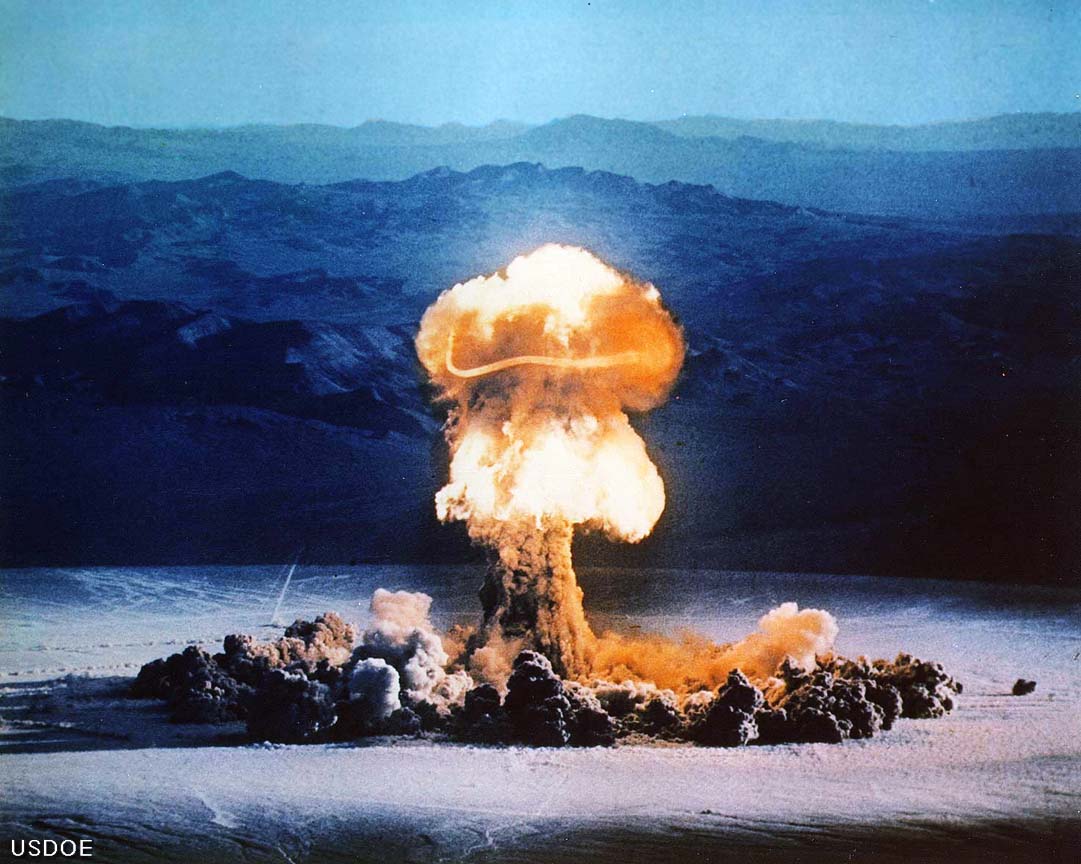
Alles is niet Niets
De schepping, Alles wat Is, is de ont-kenning van de Leegte. Die negatie ging gepaard met een enorme explosie in de vorm van een Dirac Delta-puls waardoor het Alles tot op heden permanent aan het expanderen is volgens de regel Space/Time, waarbij de tijd de inverse is van de ruimte. Alles spiraleert rondom het onmogelijke, het Niets. Als we alle schillen van de ui hebben afgenomen blijft er niets over.
“Nothing is an opportunity to imagine something. Absolute nothing is the most powerful opportunity of all to imagine anything at all. Because there is really absolutely nothing, the contrast with even a flickering thought of something is enough to make that something seem real! (Law of Forms, Spencer Brown).
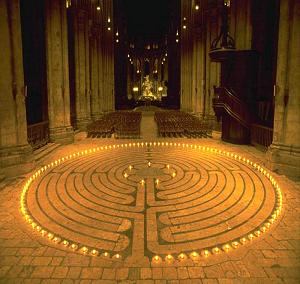
De Spiralerende Spiraal in de Kathedraal van Chartres
Het betekent ook dat er altijd sprake is van een paradox, een onlogische situatie, die we steeds maar weer proberen op te lossen maar in zijn wezen onoplosbaar is.
Will McWhinney’s meest wijze woorden zijn dan ook “Our task is not to resolve the paradoxes, but to manage them”. Het heeft geen zin om de uiteindelijke logica achter de werkelijkheid te zoeken want die bestaat niet.
Decentralisatie roept Centralisatie op en een streven naar Menselijkheid tendeert uiteindelijk in On-Menselijkheid. De enige manier is om van alles het midden te vinden en van daar uit te gaan balanceren net als een koordanser. Vandaar de andere favoriete uitspraak van Will “There is only the Dance” (van Shiva).
VERANDERPADEN
Veranderingen lopen vast als het pad van de cyclus tegen het pad van een andere cyclus opbotst. Die botsing kan worden vermeden of het conflict kan worden opgelost door een Derde Wereldbeeld te introduceren (een By-Pass) of door een extra dimensie (een “bewustzijn of observator”) te introduceren waardoor ze boven (of onder) elkaar kunnen bewegen.
DE WERELDBEELDEN EN DE PERSOONLIJKHEID
De wereldbeelden worden door Will McWhinney Unity, Sensory, Social en Mythic genoemd en zijn te vergelijken met de vier Archetypen van Jung die je kunt terugvinden in de persoonlijkheidstest MBTI. In deze test worden ze T(hinking, Unity), S(ensing, Sensory), F(eeling, Social) en I(ntuiting, Mythic) genoemd.
In MBTI worden er naast de 2-combinaties van STN & F ook nog Introvert & Extravert (I/E) en Perceiving/Judging (P/J) onderscheiden.
Introvert & Extravert slaan in het model van Will op de draairichting van de combinatie. Introvert is Naar-Binnen-Gericht (Van Sensory -> Unity -> Mythic -> Social -> Sensory) en Extravert is Naar-Buiten-Gericht (Sensory->Social->Mythic->Unity->Sensory).
P betekent Boven-het-Model (= de Observator/Bewustzijn/Abstractie/Monitor) en J is In-het-Model. Dit betekent dat er eigenlijk nog een Vijfde Wereldbeeld is maar het beeld bestaat buiten het 2-D-vlak van de vier anderen in de 3De dimensie.
Als je het projecteert in het 2D-vlak komt het in het midden uit op het Kruis-punt van de twee lijnen die de vier verbindt. In die zin staat het Kruis voor Centrum, Balans, Evenwicht en Bewustzijn.
Het grote verschil met de andere beelden is dat het net als het Oog van de Storm stil staat terwijl de rest van de paden ronddraaien. Mensen die problemen hebben met dit Wereldbeeld zijn onevenwichtig.
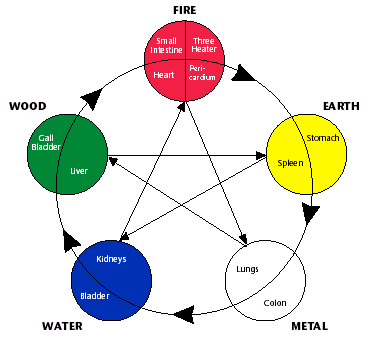
De Vijf Organen van de Acupunctuur passen perfect op de Vier Wereldbeelden. Het vijfde orgaan staat voor de relatie Geheel/Deel (Earth).
VERGELIJKBARE (META-)MODELLEN
De wereldbeelden zijn ook te verbinden met Het Denken in Modellen (Unity, Waar-maken), het Sensory-Motor Systeem (Handelen en Waar-nemen, Sensory), de Emoties (Social, Waar-deren) en de Verbeelding (Mythic, Waar-om?).
Daarnaast kun je de wereldbeelden ook afbeelden naar IT-technologie (Smart Computing). In dat geval heeft Sensory te maken met Sensors & Proces-management, Unity met Analytics en natuurlijk Big Data, Mythic met User-Inter-Face & Action waarbij nu bijv. Augmented Reality en natuurlijk Games een grote rol spelen en Social met zoals de naam het al zegt Social Networks.
Die Sociale Netwerken kun je weer verdelen in vier onderdelen n.l. de Sociale Sociale netwerken (Friends & Family), de sociale netwerken die de interesse bevredigen (Mytisch Sociale Netwerken), de sociale netwerken waar je ervaring deelt (Sensory Sociale Netwerken, Community of Practice) en de Kenniscentra (Unity Sociale Networken). Hier zie je de “fractale” kracht van POC.
The map is not the territory.
Het is van groot belang om te beseffen dat het Model, de Waar-heid van POC thuis hoort in de Unity-Mode, POC in de Praktijk van de Sensory-Mode kan worden toegepast, gewaardeerd wordt in de Social-Mode en In-zicht geeft in de Mythic-mode.
De ver-woording (= Unity) van POC die je nu leest is een voorbeeld van de Unity-Mode en niet van de andere Modes. Die andere Modes zul je zelf vorm moeten geven omdat je nu eenmaal een uniek (Mythic), sociaal (Social), bewegend & waarnemend (Sensory) en naar autonomie (Unity) strevend mens bent.
Je bent geen wandelend verhaal maar een fysiek lichaam, je emoties zijn geen woorden maar die voel je en wat je ziet wordt door je verbeelding in beelden omgezet. De buitenwereld is geen plaatje dat je bekijkt maar iets waar je met je fysieke lichaam aan deelneemt.
Vindt je eigen beperkingen:
Door een MBTI test te doen (druk hier) kun je een indruk krijgen van je eigen perceptie van de wereldbeelden die je hanteert (Let op: “die perceptie kan niet kloppen!”) en wat veel belangrijker is welke wereldbeelden je niet kunt zien (voelen, meten, vaststellen). Die vormen je zwakke plek of bias. Geloof je niet in een Bias dan maak je in ieder geval niet gebruik van het Mythische wereldbeeld omdat je daar “gelooft” (en het dus niet zeker weet). Zeker weten doe je als je Unity bent.
Als je dit verhaal tot op heden niet practisch vindt en voorbeelden mist dan ben je in ieder geval Sensory. Als je plaatjes mist en diagrammen en snel overzicht wilt hebben ben je Mythic en als je graag wilt weten wie POC ook gebruikt en aanbeveelt ben je Social.
OMDAT MENSEN VERSCHILLEN HEBBEN ZE ANDEREN NODIG OM HET GEHEEL TE KENNEN.
Als je de wereld als een geheel wilt zien, ervaren, waarnemen of waarderen zul je andere mensen moeten zoeken die beschikken over een complementaire kijk en via de gedeelde wereldbeelden moeten gaan communiceren. Hierbij moet je beseffen dat je die anderen volledig zult moeten vertrouwen in de kijk die jij niet hebt.
De meeste mensen kunnen twee wereldbeelden hanteren en eenvoudig tussen die wereldbeelden switchen zonder dat ze dat merken.
Als je maar 1 wereldbeeld aankunt ben je volgens de Psychiatrie geestelijk in de war. Mensen die uitsluitend het Wereldbeeld Unity gebruiken zijn Paranoide en een unieke orientatie op Mythic wordt Histrionisch genoemd. In dat laatste geval speel je permanent een (toneel)spel en geloof je je eigen leugens omdat je volledig in je eigen fantasie leeft.
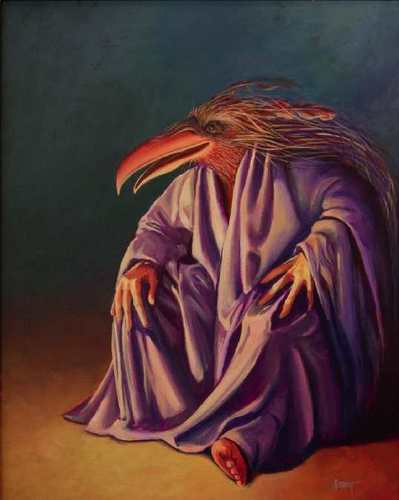
De trickster gelooft in zijn eigen leugens
in POC worden de vier wereldbeelden gecombineerd in 4 1-combinaties, 6 2-combinaties, 4 3-combinaties en 3 vier-combinatie die allemaal ook nog een keer met de klok of tegen de klok kunnen ronddraaien. In dit opzicht kunnen ze allemaal worden gezien als een cyclus.
De zes 2-combinaties kun je Ontwerpen/Inspireren, Analyseren/Toetsen, Evalueren/Alloceren, Brainstormen/Faciliteren, Beinvloeden/Meningvormen en Uitvinden/Ondernemen noemen. Will McWhinney noemt ze Spellen (“Games”). De combinatie Social/Sensory noemt hij bijvoorbeeld het Spel van de Markt.
Het bijzondere van POC is dat de vier wereldbeelden met het bewustzijn in het midden afzonderlijk weer kunnen worden verdeeld in vier delen met behulp van dezelfde wereldbeelden waardoor er in eerste instantie 16 mogelijkheden ontstaan waarvan er 12 verschillend zijn en vier weer gelijk zijn aan de oorspronkelijke wereldbeelden. UnityXUnity is nu eenmaal gelijk aan Unity.
PATH OF CHANGE KAN OP ZICHZELF WORDEN TOEGEPAST
Het toepassen van POC op zichzelf laat zien dat POC fractaal (zelf-referend) is. De zelf-referentie kan eindeloos worden voortgezet met als enige kanttekening dat het bepaald ogenblik erg moeilijk wordt om de combinaties te benoemen.
De expansie naar 2**8=64 is een heel bijzondere en wordt toegepast in de I Tjing. Daarnaast zie je hem ook terug in spellen zoals het Schaakspel.
Na de 64 herhaalt alles zich en die herhaling kun je zien in het getal 8 dat een eigenlijk een Moebius-ring voorstelt. 8 = 2×4 en door het koppelen van twee ronddraaiende 4-hoeken op 1 punt (het Hart) komen we op de bekende 3-1-3 (=7) structuur die zich toont in de Zeven Chakra’s.
In wiskundig oogpunt heeft POC erg veel verband met de z.g. Driehoek van Pascal, die heel lang geleden de berg Meru werd genoemd.
De basis-fractal van POC is niet 2×2 maar tweevoudig of beter gezegd drie-voudig omdat het onmogelijk is om een verdeling te maken zonder de deling (“het onderscheid”) zelf ook mee te nemen ook al is het eerste onderscheid ”geen onderscheid”.
DE ESSENTIE VAN PATH OF CHANGE IS MEER-DIMENSIONAAL ADEMEN.
De eerste Trinity (Yin/Yang + Midden) kan op vele manieren worden weergegeven. Ik prefereer de Uitgaande (“Expansie”, Extravert) en de Ingaande (“compressie”, Introvert) Beweging die in combinatie het “ademen” van de werkelijkheid simuleert. De derde (“het Midden”, Rust, de Leegte) is het moment waarop de uitgaande beweging weer omdraait in een ingaande beweging.
In zijn wezen is ieder mens een unieke fractale expansie van Path of Change dus van het Ademende Heelal.
Er zijn aanwijzingen dat we op dit moment in de 42e expansie zitten. De expansies vinden ook weer volgens een regelmaat plaats. Die regelmaat wordt beschreven door de Bronze Mean.
De Bronze Mean komt voort uit een abstractie van de Gulden Snede ook wel de reeks van Fibonacci genoemd. Het bijzondere is dat de generator van de Bronze Mean wordt gestuurd door de Trinity.
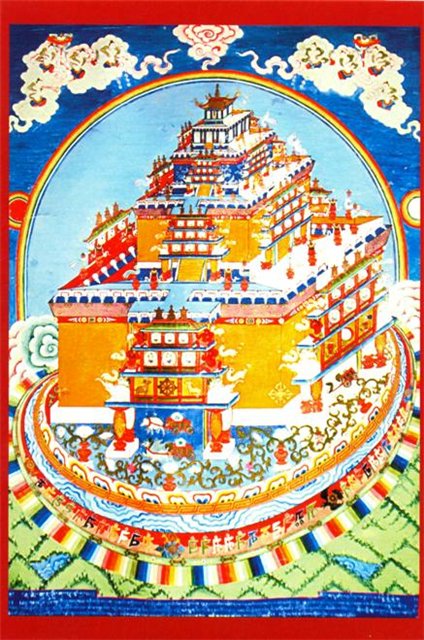
De berg Meru
HET LEVEN IS EEN SPEL
Volgens Will McWhinney spelen mensen met elkaar een spel waarbij ze soms gevangen zitten in een gezamenlijke cyclus zoals de “drama triangle“.
Het meest intigrerende spel is een combinatie van Mythic & Social (“Het waarderen van ideeen”) (Brainstorm, Explosie), (“het collectieve onderbewustzijn activeren”) (Scheppen, Implosie)). Dit is het spel dat spellen maakt, het spel dat kinderen spelen, het spel van de magier en de trickster en het oneindige spel (“the infinite game“) omdat het niet wordt gespeeld om te winnen maar omdat het voortgaan van het spelen op zich het mooiste is wat de mens, als mede-schepper kan doen.
Een hele bekende 2-cyclus is de wetenschapscyclus waarbij theorien (Unity) worden getoetst aan de werkelijkheid (Sensory) en andersom.
Door de enorme waarde (= Social) die er in onze tijd aan wetenschap (=objectief) wordt toegekend lopen we het risico dat de weg terug (het aanpassen van de theorie aan de praktijk) niet plaatsvindt waardoor onze werkelijkheid een theoretische constructie wordt (een norm, regel) waar we ons aan te houden hebben.
Een veranderingspad werkt als er geen sprake is van een conflict van de wereldbeelden. Een conflict ontstaat als twee paden verschillende kanten oplopen en daardoor botsen.
Een voorbeeld is het boven beschreven conflict tussen praktijk en theorie maar het kan nog vervelender worden als de andere wereldbeelden (Social = Emoties en Mythic = Verbeelding) ook worden gedomineerd door het Unity-wereldbeeld.
Hierdoor worden Emoties vervormd tot Emotionele Intelligentie en wordt de Verbeelding gediskwalificeerd als een Illusie of Fantasie.
TOEPASSING
In de presentatie toon ik een klein aantal van de enorme hoeveelheid toepassingen van POC.
LOGICA VAN DE SCHEPPING
Het eerste deel, de Logica van de Schepping, laat zien dat de vier wereldbeelden eigenlijk bestaan uit een combinatie van slechts twee beelden (Expansie & Compressie (niet-Expansie)) die de lege verzameling gemeen hebben.
Het ene beeld is een negatie (ont-kenning) van het andere beeld. Ze worden in de praktijk aangeduid met bijv. Yang en Yin, mannelijk en niet-mannelijk (=vrouwelijk), orde en niet-orde (chaos), licht en niet-licht (donker), koud en niet-koud (warm) etc etc.
De twee andere wereldbeelden zijn combinaties van de Yin en de Yang via EN (Mythic, Yin EN Yang) en OF (Social, Yin OF Yang).
De vier kijken op de wereld worden in het Boeddhisme het Tetralemma genoemd.
Het Tetralemma wordt gebruikt om de “vreemde” wereld van de Quantum-mechanica te verklaren.
Met behulp van de twee-heid “Naar buiten gaan” (Extravert, Expansie) en “Naar binnen gaan” (Introvert, Compressie) en de logische operatoren EN en OF kun je eindeloos veel 2-combinaties maken waarvan het aantal een macht van twee is.
Een mooi voorbeeld van een betekenisvolle binaire combinatiereeks is de I Tjing die 64 (2**8) combinatie bevat. Het getal 64 is een heel bijzonder getal omdat na de 64 de cyclus zich weer herhaalt. Het symbool van het getal 8 is niet voor niets de Moebius Ring.
In de I Tjing zijn alle combinaties voorzien van een symbool en een kort verhaaltje dat de betekenis van dit symbool uitlegt. Duidelijk zal zijn dat men hierbij gebruik heeft gemaakt van de uitingen van het combinatie-spel in de Natuur en de Mens.
In het Mythic wereldbeeld dat wordt verbonden met Ideeen, Scheppen en het Verbeelden worden twee tegenstellingen (Appel en Niet-Appel, Goed en niet-Goed = Kwaad) opgeheven door naar een hoger niveau van abstractie (Fruit, Ethiek) te springen. Die fusie geeft erg veel energie net als de combinatie van materie en anti-materie.
Mensen met een Social Wereldbeeld moeten steeds een keuze maken tussen de twee tegenstellingen omdat ze anderen te-vreden willen houden. Ze durven het conflict niet aan dat voortvloeit uit de contraverse tussen de twee tegendelen (bv Orde & Chaos).
Een waarde is een karakteristieke manier waarop mensen een keuze maken. Omdat POC fractaal (zelf-refererend) is bestaan er weer vier verschillende manieren om een keuze te maken, waarbij de vierde manier een combinatie van hetzelfde (hier Social/Social) is. In dat laatste geval kiezen mensen door weer nieuwe keuzes te gaan formuleren.
Doordat mensen een keuze maken (en hun opties niet open houden) wordt de wereld die ze beschouwen steeds kleiner (gefragmenteerd, gespecialiseerd). Als de twee-deling overlapt (wat meestal het geval is) wordt de wereld ook steeds vager en conflicteuzer omdat mensen een claim gaan leggen op elkaars gebied. Ze zijn niet instaat om het conflict op te lossen omdat alles met alles lijkt samen te hangen. Er zijn geen duidelijke grenzen meer.
HET WEERSYSTEEM
Het tweede deel gaat over de vier wereldbeelden in samenhang met het weer-systeem. Hier wordt ook de vier-combinatie-cyclus zichtbaar. Hier zie je dat Social en Mythic nodig zijn om de voortgaande expansie en/of compressie een halt toe te roepen zodat het geheel niet weer opgaat in de Leegte die het Niet-Al is. Hierdoor ontstaat de Levensgolf (de Svara).

gravity waves
OUDE MODELLEN
Het derde deel “Het Rad van Avontuur” genoemd, behandelt oude vormen van Path of Change (Indianen (Medicine Wheel), China(Sheng-Cyclus, Lo Shu) en het Buddhisme). Die staan allemaal uitgebreid beschreven in dit document.
PSYCHOLOGIE
Deel vier gaat over Interpersonal Theory, waarna wordt getoond dat de twee gekoppelde vier-combinatie-cycli overeenstemmen met het aloude concept van de chakra en dat het symbool van het Hart-Chakra (twee gekoppelde driehoeken) hetzelfde toont.
EGYPTISCHE GODEN
Het laatste plaatje in dit onderdeel gaat over de Egyptische Godin (= concept) Ma’at, die ook de bestuurder was van de toegang tot het dodenrijk (het pad van reincarnatie, het rad van avontuur). Het Egyptische concept Ma’at laat zien dat je uit het Rad van Avontuur kunt stappen als je de twee driehoeken van de Geest en het Lichaam in evenwicht brengt in het Hart dat dan zo licht weegt als de Veer van Ma’at. Ma’at werd door de Grieken Sophia (Wijsheid) genoemd.
BEDRIJVIGHEID
In deel vijf worden een aantal toepassingen van POC getoond in het bedrijfsleven en het laatste deel gaat over de relatie tussen POC en tijd. Dit laatste deel staat ook hier beschreven.
In het deel over het bedrijfsleven toont POC dat de bedrijfskundigen vergeten zijn om het pad rond te laten lopen in een bedrijf waardoor er geen sprake is van feed-back. De beroemde waardeketen van Porter is eigenlijk een waardencyclus en ketenomkering is niets anders dan consumeren en consumeren is niets anders dan de omgekeerde rotatie van produceren.
Produceren is een vorm van Compressie (Versimpelen van de Praktijk) en Consumeren een vorm van Expansie die elkaar eigenlijk zouden moeten opheffen.
In dit laatste geval zijn we vergeten om de rechtsdraaiende cyclus van de productie te koppelen met de linksdraaiende cyclus van de consumptie waardoor het opheffen van de productie door de consumptie niet meer evenwichtig plaatsvindt. Productie en consumptie zijn een prachtig voorbeeld van boven beschreven complementaire wereldbeelden die samen de Leegte vormen.
LINKS
